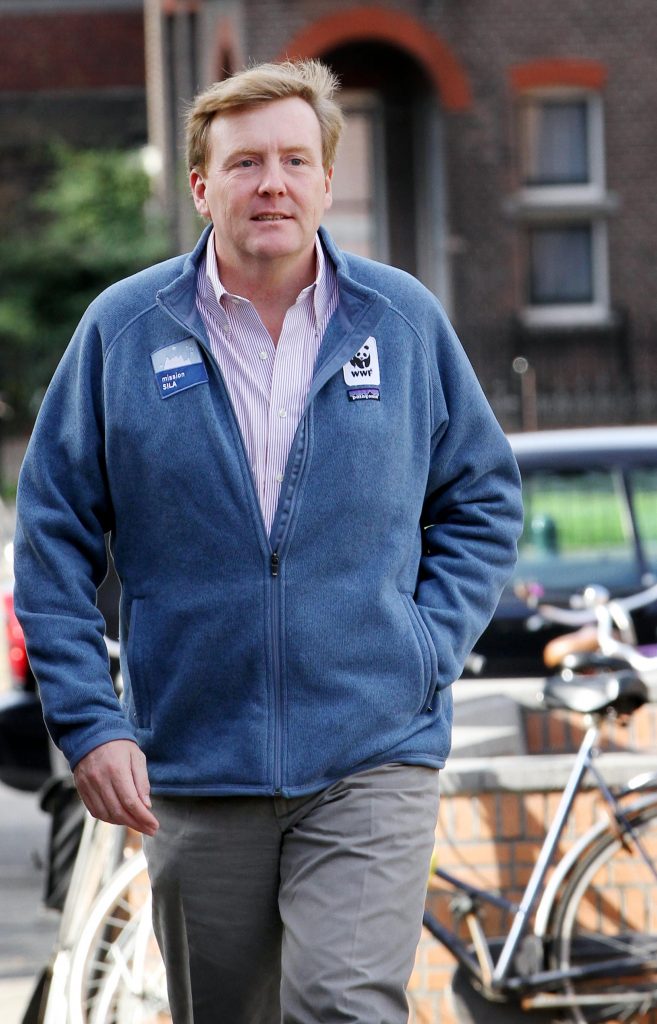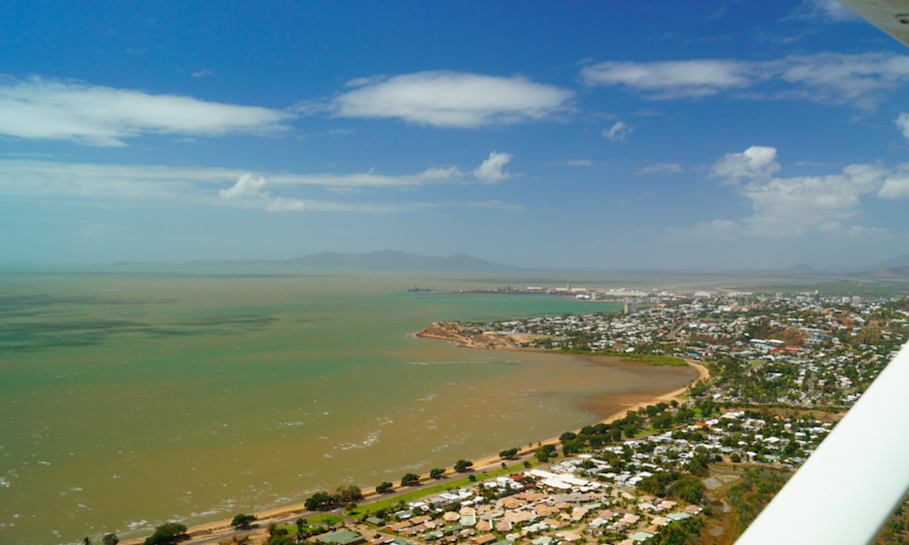
THE World Wide Fund for Nature’s ‘Save the Reef’ Campaign was launched on 6th June 2001, which was World Environment Day that year.
There was no forewarning. I woke-up that morning to the Australian Broadcasting Corporation explaining how many ‘dump trucks’ of mud sugarcane farmers where apparently off-loading onto Great Barrier Reef corals. It was the lead story for the morning news bulletin.
I turned off the radio and turned on the television. There was the same WWF campaigner, Imogen Zethoven. This time she might have been in a helicopter showing a plume of sediment apparently polluting the once crystal-clear waters of the reef lagoon.
There wasn’t a dump truck in sight.
But Imogen’s words about the reef waters being polluted with sediment were backed-up with journalists explaining how many ‘dump truck equivalents’ of soil were coming down the rivers and streams apparently from the cane farming areas.
Reference was made to a ‘Great Barrier Reef Pollution Report Card’.
That morning, I would have liked to be the Sowrie crab swallowed by the Spur-winged plover [1]. I certainly didn’t want my job as the Environment Manager for the Queensland Canegrowers Ltd.
The first call on my mobile phone was from Ian Ballantye, the General Manager of Canegrowers. Once a Lieutenant colonel in the Australian army, he wanted to know where I was?
I was staying in a motel in Townsville. I had a hire car. My plan was to drive-up to Ingham to assist scientists from the Bureau of Sugar Experiment Stations (BSES) with a workshop about a new bio-active natural control agent for cane grubs.
Ian wanted me to fly back to Brisbane, to help formulate a response to what he described as “the beginnings of a well-orchestrated campaign to close us down”.
I suggested that the best response was “No response”.
“It might blow-over,” I suggested, “If we ignore it. But. If you respond as the GM from Canegrowers, then that potentially just gives Imogen a second go.”
As I checked out of the motel that morning, the balding, overweight owner made comment to me. “The cane growers are going to have to finally get their act together,” he said, “There is a New Zealand bird coming after them.”
He was no doubt referring to Imogen, who he would have also heard on the news that morning, and he had noted her New Zealand accent.
“Did you know,” I responded, “That the Melbourne-based Australian Conservation Foundation set a target of 50 per cent adoption of soil erosion reducing minimum-tillage, green-cane harvesting by 2000 for the farmers in the Mackay region?”
He didn’t reply.
“They have exceeded that target,” I continued. “Over 85 per cent of Mackay growers now green cane harvest. And,” I paused hoping he would look at me, “Did you know that under this green cane system, soil loss is equivalent to levels in a natural rainforest situation, that is according to research by CSIRO published in 1997.”
He still had his back to me.
“Do you want me to give you the reference? I might even have a reprint in my briefcase.”
He was printing off my invoice; when he finally turned back around, and as he handed me the paper, I added, “Levels of adoption of this new system exceed 85 per cent for all the regions north of here.”
“You better tell all of that to the WWF,” he suggested disingenuously.
“I already have,” I said, “I’ve also explained all of this to the relevant ABC journalists.”
“Oh well,” he sighed, while looking away again.
I could see he would have preferred the opportunity to whine with me about farmers and farming. I could see he had been impressed with everything Imogen had said on which ever news channel he had watched that morning. Never mind that it was propaganda.
I had known Imogen for some years as the coordinator of the Queensland Conservation Council (QCC). Before WWF, she had an office in that low-set, heritage-listed, building surrounded by skyscrapers, on noisy Ann Street in Brisbane’s CBD.
I had had a long association with the QCC. It probably went back to at least 1981 when I was an undergraduate at the University of Queensland and volunteered to be part of a blockade to stop the building of a road through the Daintree National Park, which is in far north Queensland – north of Cairns, as far as the coast road extends north.
It had been at least a year earlier, in 2000, just before the Sydney Olympics, at some function or other in Brisbane, that Imogen had told me that she was being flown to Sydney to meet Willem-Alexander, the son of Queen Beatrix of Holland – in advance of a new environmental campaign that she would be involved with.
Until then, I had no idea how connected WWF was to the world’s elite and its old money. I vaguely knew that Prince Charles was the President of WWF-UK. I hadn’t realized that the grandfather of the Dutch Prince Imogen was flying to Sydney to meet was actually the founding President of WWF. Imogen explained all of this to me that evening in Brisbane – it might have been a function at the Queensland Parliament House where we were given wine and cheese but no chairs while we listened to the Queensland Environment Minister, who was then Rod Welford, announce a new initiative. The current Queensland Premier, Annastacia Palaszczuk, may have also been at that event – the next year she worked for the new Environment Minister Dean Wells and occasionally chatted with me about house prices where I lived in Chelmer.
I clearly remember Imogen telling me how she was buying a new suit for the trip to Sydney to meet the Royal, and how WWF had money from a US-donor who wanted to ‘save the Great Barrier Reef’. There was more than enough money to get something started, in a big way. She was going to quit her job at the QCC, and spear-head the Prince’s campaign with the money from the US donor.
At the time she made no mention of a launch on World Environment Day, or dump trucks!
There might have been a semblance of science to Great Barrier Reef research before that WWF campaign. But that was smashed by Imogen who demanded emotionality and good story telling – her first degree was in English literature. Her reach was extraordinary, including direct access to then Federal Environment Minister, Senator Robert Hill.
By late 2001, his staff, and her staff, were island-hoping the Great Barrier Reef in helicopters with Australian Institute of Marine Science (AIMS) scientists while chatting to Guardian journalists, all the while lamenting how muddy the waters of the inner reef lagoon had become – because of the hapless sugarcane farmers. No mention was ever made that these fringing reefs grow in naturally turbid waters along the coast line. They have a different ecology to the middle and outer reef systems.
By the financial year 2002-03, WWF-Australia was receiving over $4 million in grants from the Federal Government, and Imogen was working with a staff of 100. Many of these employees were subsequently promoted into new government jobs on new environmental and research advisory committees with more new government-money, for more research.
Imogen had effectively leveraged the original funding from the US-donor and established a new narrative about the Great Barrier Reef.
Much of the success of the campaign was embedded in the story telling, specifically her establishing cane farmers as villains – though the industry had done nothing to provoke such an attack.
There wasn’t even any evidence to suggest that there was more sediment in suspension in the waters of the inner reef lagoon than before European settlement. It was being measured, with equipment invented by a young scientist working in the Geophysical Laboratory at James Cook University. His name was Peter Ridd.

*********
[1] To understand this reference you perhaps need to read the previous installment in this series, which is here.
This is the third blog post in a new series on activism and the Great Barrier Reef.

 Jennifer Marohasy BSc PhD has worked in industry and government. She is currently researching a novel technique for long-range weather forecasting funded by the B. Macfie Family Foundation.
Jennifer Marohasy BSc PhD has worked in industry and government. She is currently researching a novel technique for long-range weather forecasting funded by the B. Macfie Family Foundation.